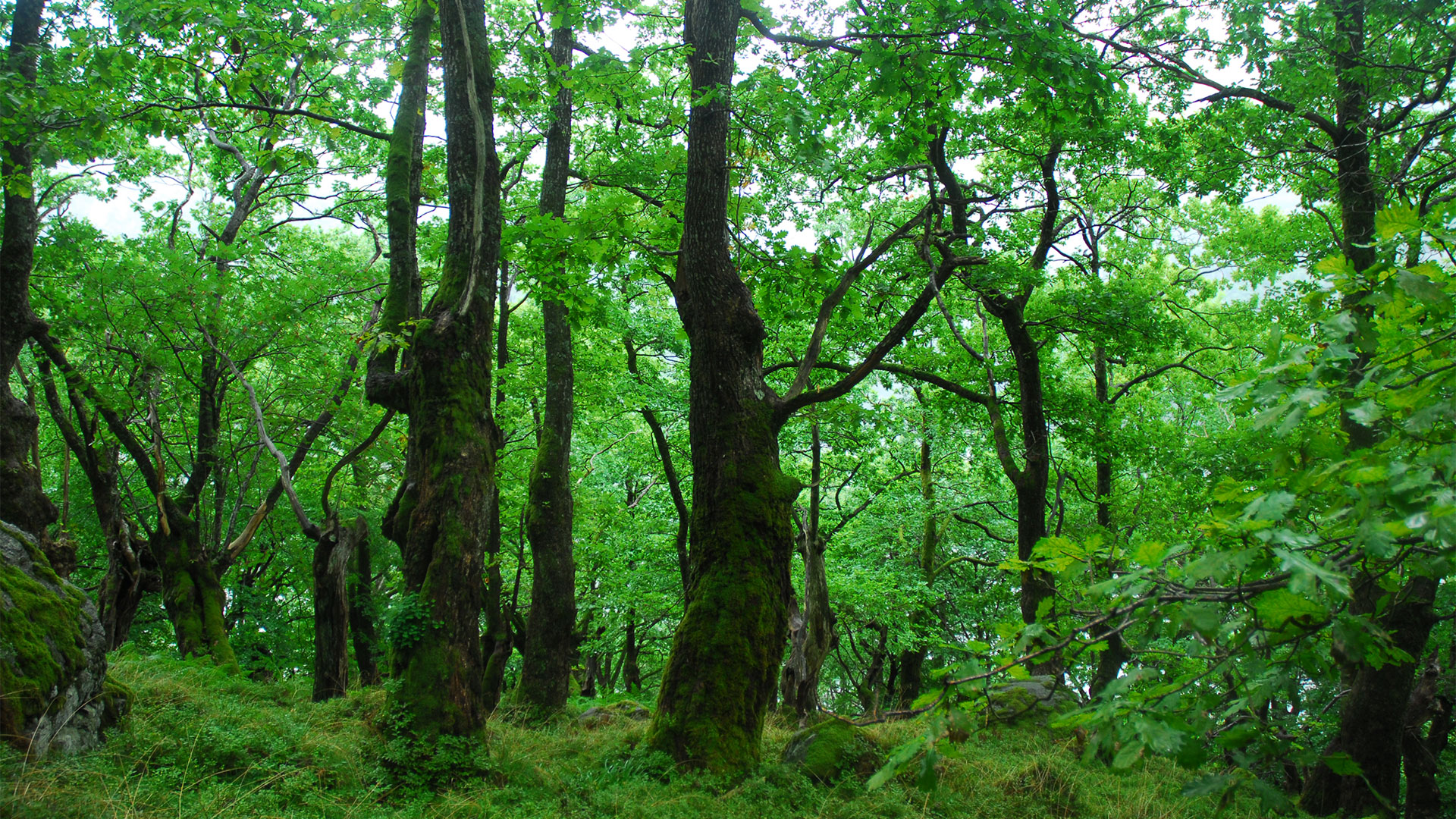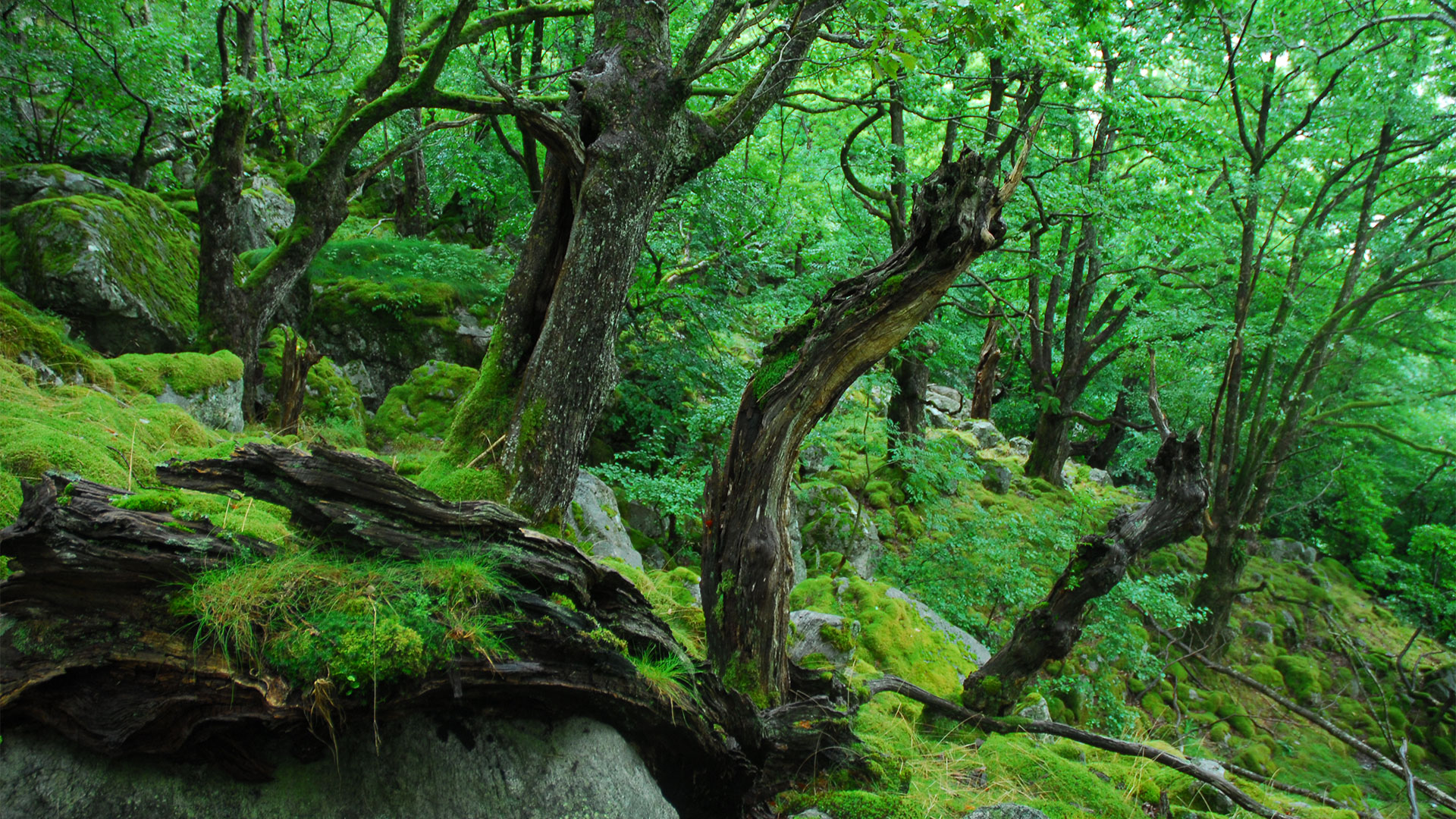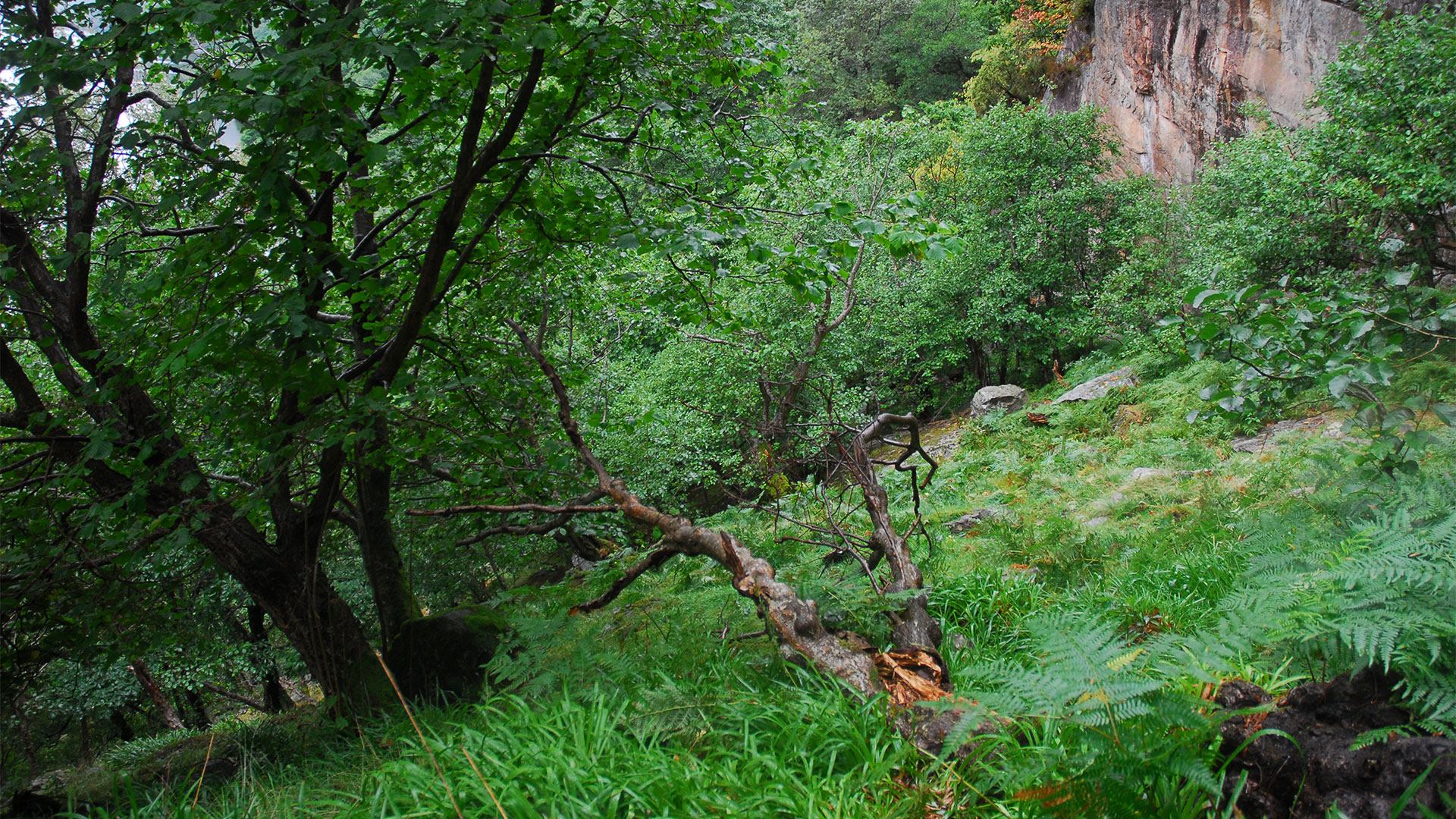
Background for protection and threats
The objective of protecting Ørestø Nature Reserve is to safeguard a special natural area. Particularly important is the gradient from the sea up to the lower hills that runs through deciduous forest, natural pine forests, birch forests and further up to moist heathlands. The area has great biodiversity in the form of biotopes, ecosystems, species and natural ecological processes, and is of great importance as a scientific area of reference. The distinctive deciduous forest comprising of linden, oak and ash and many pollarded trees has a very interesting lichen and moss flora. The area attracts many different species of bird and is an important breeding area for passerine birds and woodpeckers. Some of the pollarded trees need to be maintained so as to preserve this important heritage value in the area. Otherwise, there are no major threats to the heritage values in Ørestø.
Plant life and wildlife
A pollarded oak and blueberry forest grows in the lower part of the nature reserve, together with a large linden and ash forest. There is also quite a lot of gray alder forest. Several types of red-listed lichen species grow on the pollarded trees. Plants such as lily of the valley, northern spleenwort, great burnet, broad-leaved helleborine and wood sanicle grow in the area. A number of insects and other invertebrates live in the old pollarded trees. The area attracts many different species of bird and is an important breeding area for passerine birds and woodpeckers.

Past use of the area
In the past, the forest resources have been used to produce firewood and timber, and the deciduous trees such as oak, ash and linden have been pollarded for animal fodder. Trails run through the nature reserve that were used when driving sheep and cattle to the higher grazing grounds. The area has been used quite a lot for grazing. This is especially the case along the trail at the northwest border in Ørestø and in the more open coastal hills.

Current use
A waymarked hiking trail runs through parts of Ørestø. This trail is used on trips to Frafjordhatten mountain. Tree felling for firewood and sheep grazing also take place in the area.

Sources and further reading
Verneforskrift på Lovdata Forvaltningsplan Fylkesmannen i Rogaland, 2001. Verneplan for Frafjordheiane. Fylkesmannen i Rogaland, 2006. Ørestø og Migaren. Naturreservat i Gjesdal kommune. Forvaltningsplan. Nielsen, T.R. 2000. Verneplanarbeid Frafjordheiane-kartlegging av insekter o.a. invertebrater i verneområdet år 2000. Fylkesmannen i Rogaland. Roalkvam, R. 1979. Rapport frå zoologiske inventeringer i Frafjordheiene. Fylkesmannen i Rogaland. Stavanger Turistforening 1987: Frafjordheiene. Nasjonalpark i Rogaland. STF Årbok 1986. Steinnes, A. 1984. Flora, vegetasjon og botaniske verneverdiar i Frafjord-Espedal-området. Fylkesmannen i Rogaland. Tysse, T. 2000. Rovfugl og lom i Frafjordheiane-en utredning i forbindelse med utarbeiding av verneplan. Fylkesmannen i Rogaland.
